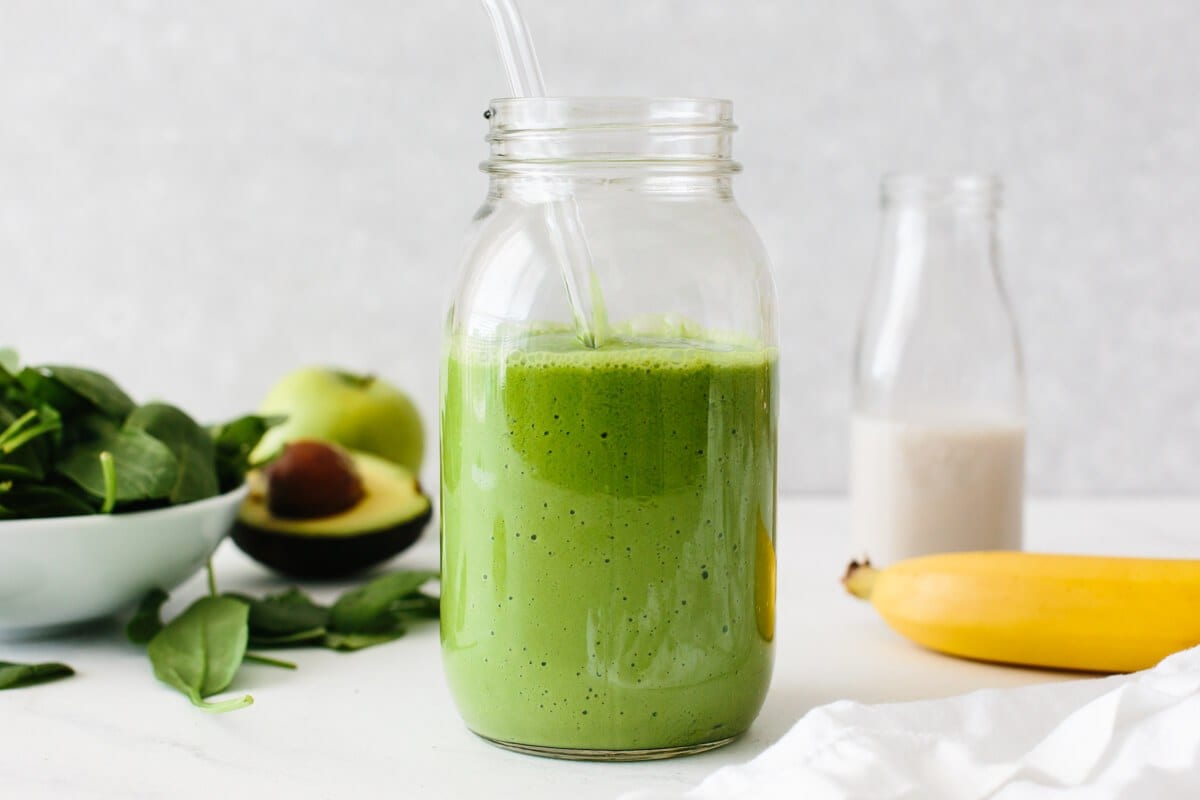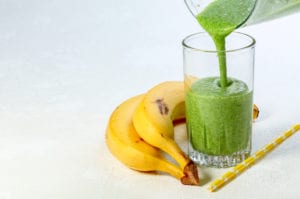
The word smoothie has a healthy glow about it…it’s often a part of many diets, cleanses, and is a staple in many celebrities’ day-to-day diets. And the smoothie trend is still going strong. Workout studios now serve them after class, dietitians sing their praises, and we’ve seen smoothie bowls popping up at every juice shop (and Instagram story, for that matter). Smoothies are an especially great way to get more greens into your daily regimen.
The best green smoothies are nutrient-rich blends of fruits and vegetables. They have become a popular way for people to help meet their recommended daily intake of vitamins and minerals. Unlike juices, green smoothies retain the beneficial fiber content from whole foods. At their most basic level, green smoothies combine leafy greens like spinach, kale, and arugula with a liquid base like water or milk. Instead of adding actual leafy greens though, a powdered greens drink mix can be added, along with fruit and a liquid of your choosing.
Though you can put almost anything into a smoothie, most consist of things like fruits, a liquid base, greens, yogurt, maybe a protein powder, and some toppings like granola, shaved coconut…the options are endless. The key to making sure your smoothie is healthy is to strike the right balance of veggies, fruits, protein, and fat…because a mistake that some folks make with their smoothies is loading up on too many items containing sugar, which lessens the health benefits.
Tips for the best green smoothies (or smoothie bowl)
#1: We recommend making your own smoothie versus buying one in-store or pre-bottled. Sure it’s convenient, but with store-bought smoothies, you lose control over the quality and quantity of ingredients used. Store-bought smoothies may also contain things like added sugar, artificial sweeteners, and large amounts of fat and/or dairy products.
#2: Give your smoothie some staying power! A big complaint about having a smoothie for breakfast or lunch is that you’re still hungry after finishing it. So in addition to greens, we recommend including a few healthy sources of protein and fat in your smoothie. Some good sources of protein come from chia, hemp or flax seeds, or plain yogurt. Good sources of fat in smoothies are salt and sugar-free nut butter, coconut meat, or full-fat organic yogurt.
#3: We touched on this a bit before, but try to be mindful of how much sugar is going into your green smoothie (between the fruits, stevia, or honey…it really adds up). It’s easy for smoothies to veer in a sugary direction, and too much sugar can increase inflammation in the body. Balance the sugar by adding in leafy greens like spinach, kale, or chard (which provide fiber, calcium, and phytochemicals) or a powdered green drink mix.
#4: A little post-smoothie bloat is normal! When you’re eating a fruit or vegetable in its whole form, your body is breaking everything down itself. Digestion starts with the process of chewing, and smoothies do not really involve chewing. Essentially, the blender does the chewing for you. That means that some people might feel a little bloated when they drink a smoothie, which is completely normal.
#5: If you are looking to add a little creaminess to your smoothie, try avocado! Its mild flavor disguises its nutritional benefits. After removing its skin and pit, you can add a whole avocado to your smoothie, giving it a little more body and a smoother texture.
#6: Making a good green smoothie is about more than just throwing some kale in a blender and calling it a day. In order to make a green smoothie that tastes good, proportions are important. Try to stick to a 40-60 split…40% greens and 60% everything else. Yes, the greens are an important ingredient and add significant nutritional value, but if they overpower the rest of the mix, your smoothie might taste more like a salad than a treat.
#7: This is a quick one. Try to mix it up when it comes to your smoothies…dietary diversity can be really helpful to ensure a well-rounded nutrient intake. Don’t stick to the same ingredients/additions every time!
How to keep your green smoothie green?
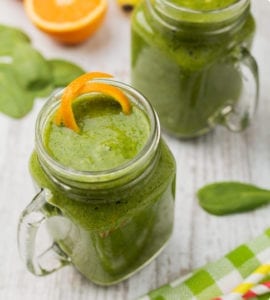 There are lots of healthy greens to add to your smoothies and we’re sure you’ve heard all about the “usual” greens, like kale, spinach, and the like. But besides the “usuals” that you’re likely already familiar with, there are a few more “powerhouse” green superfoods you should consider adding to your smoothies (or looking for in a quality superfood green powder).
There are lots of healthy greens to add to your smoothies and we’re sure you’ve heard all about the “usual” greens, like kale, spinach, and the like. But besides the “usuals” that you’re likely already familiar with, there are a few more “powerhouse” green superfoods you should consider adding to your smoothies (or looking for in a quality superfood green powder).
Wheatgrass: Maybe you’ve seen people taking shots of wheatgrass at your local gym or smoothie shop, and with good reason. It is an excellent source of vitamins A, C, and E, as well as iron, magnesium, calcium, and amino acids. Among its 17 amino acids, 8 are considered essential, meaning your body can’t produce them—they must come from your diet. Wheatgrass is a powerful source of glutathione, known as the “master” antioxidant. It’s little wonder that preliminary research has found that it reduces oxidative damage to cells. Other studies suggest that wheatgrass may support healthy cholesterol levels, aid in balancing blood sugar, counter an inappropriate inflammatory response, and induce the destruction of damaged or abnormal cells.1
Chlorella: This freshwater alga has survived on the earth for over two billion years. The secret to chlorella’s longevity is its fibrous outer wall. Although this defensive wall protects this single-cell alga, it also prevents the body’s ability to take advantage of chlorella’s detoxification benefits. Fortunately, scientists have found that breaking this wall releases chlorella’s natural ability to bind toxins and heavy metals through a process known as chelation. Chlorella also boasts a wealth of vitamins including vitamins B1, B2, B12, folic acid, C, and K. Plus, chlorella is a potent source of minerals, essential fatty acids, protein, and fiber.
Spirulina: High in antioxidants, spirulina has been shown to inhibit the production of inflammatory signaling molecules. Spirulina is also rich in high-quality protein, B vitamins, iron, copper, magnesium, potassium, and manganese. Not only does this make spirulina an alkaline food, but its rich nutrient profile also gives this alga numerous health benefits as well. Research shows that spirulina supports healthy lipid levels, helps maintain blood sugar balance, benefits those with seasonal allergies, and improves muscle strength.3
Kelp: This type of seaweed is rich in B vitamins, which play a critical role in cellular metabolism. Because it absorbs nutrients from its surrounding environment, kelp contains more than 15 amino acids and is also a great source of calcium, magnesium, copper, zinc, boron, and manganese. As a result, this mineral-rich seaweed helps maintain bone density and muscle health.4
Smoothie Recipe Favorites
Here are our two favorite smoothie recipes. Save them on Pinterest or better yet, make them!
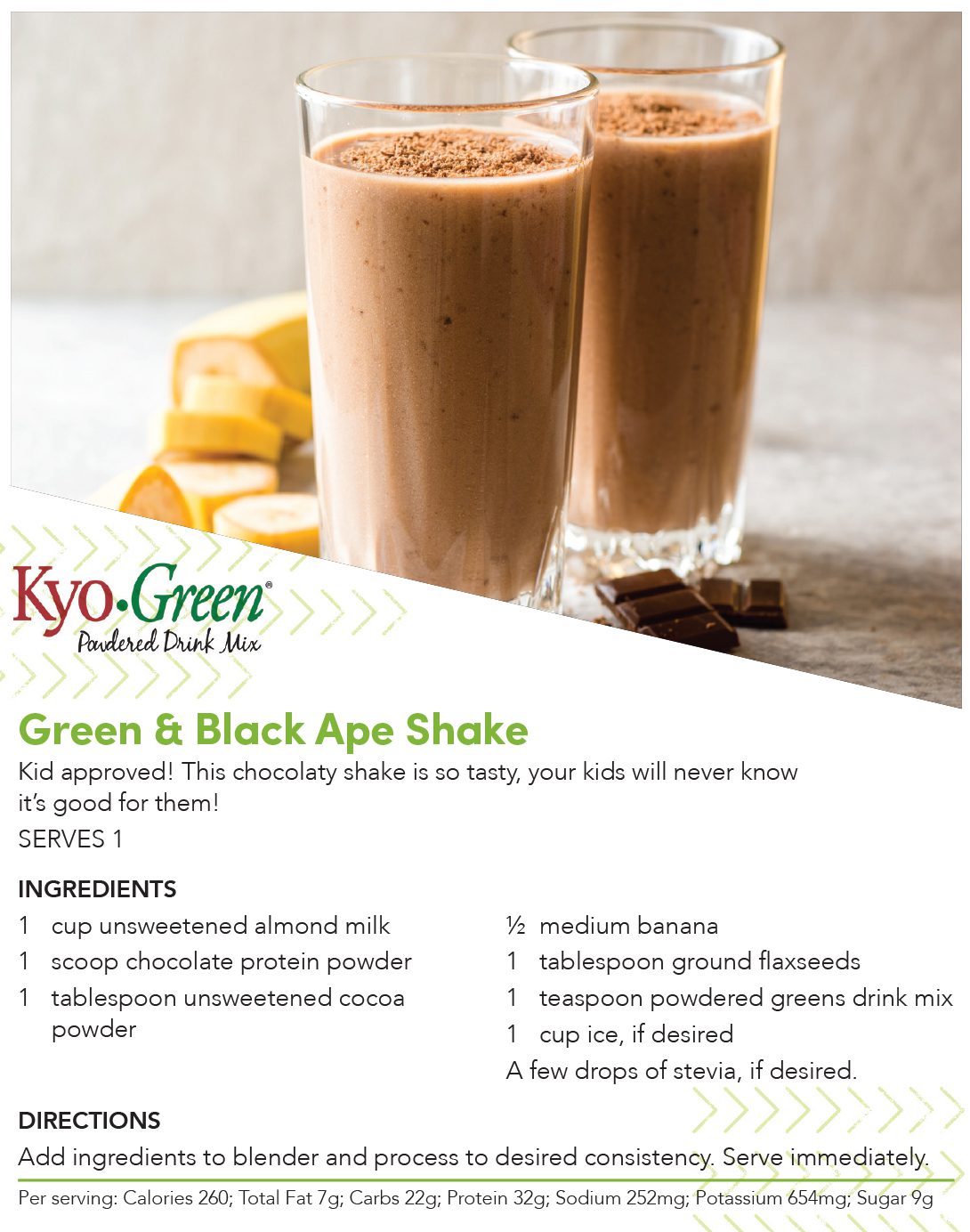
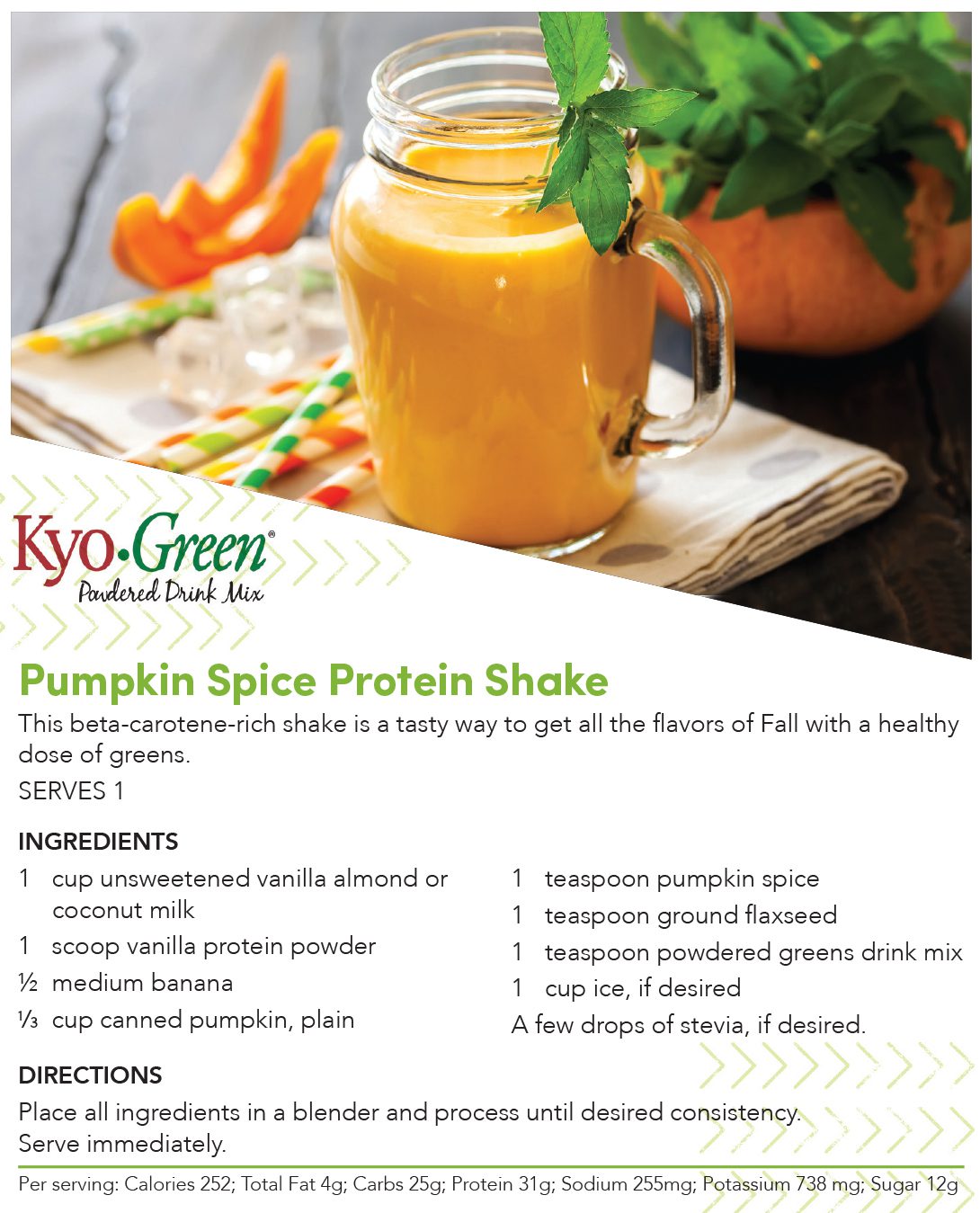
One of the simplest ways to boost your overall health is by increasing your greens intake…and an easy way to do that is with a green smoothie. A healthy green smoothie makes a delicious alternative that ensures you’re consuming lots of naturally occurring vitamins, minerals, and antioxidants. Whether you decide to stick to one of your tried and true green smoothie combos or try one of these new recipes above, these nutrient-packed smoothies make for a great breakfast, lunch, or even snack.
This article is for informational purposes only. This article is not, nor is it intended to be, a substitute for professional medical advice, diagnosis, or treatment and should never be relied upon for specific medical advice.
References
- Bar-Sela G, Cohen M, Ben-Arye E, et al. The Medical Use of Wheatgrass: Review of the Gap Between Basic and Clinical Applications. PubMed. 2015.
- Lloyd-Jones, R. Adams, J. McPherson F, et al. Impact of Daily Chlorella Consumption on Serum Lipid and Carotenoid Profiles in Mildly Hypercholesterolemic Adults: a Double-Blinded, Randomized, Placebo-Controlled Study. Nutrition Journal. BioMed Central, January 1, 1970.
- Karkos P, C Leong, Karkos C, et al. Spirulina in Clinical Practice: Evidence-Based Human Applications. Evidence-based complementary and alternative medicine. Hindawi Publishing Corporation, 2011.
- International Osteoporosis Foundation. Ten Ways to Boost Your Bone Health at the Kitchen Table. IOF.
